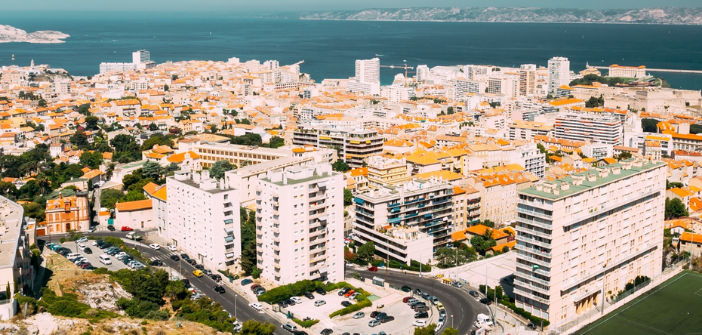Starting from September 1, 2022, Marseille will also implement its Low Emission Zone (LEZ). Thus, the most polluting vehicles will no longer be able to travel in the Phocaean city. The goal is to reduce CO2 emissions. But what exactly is a LEZ? What will be the upcoming deadlines? Answers in this article.
LEZ launch in Marseille on September 1
As of September 1, the most polluting vehicles will no longer be able to circulate in the greater downtown area of Marseille. This measure will help reduce greenhouse gas emissions in the metropolitan area, where premature deaths related to air pollution are estimated at 2,500 annually. This Low Emission Zone project is jointly supported by the city of Marseille and the Aix-Marseille-Provence metropolitan area. While the project was launched in 2018, a public consultation was conducted at the beginning of this year with citizens. The next step before the LEZ is implemented is an informative communication campaign. Signage will be installed at the beginning of the summer to ensure everything is ready by September. An initial educational phase will be applied before sanctions are imposed on those driving vehicles that do not meet the required class.
WHAT STEPS UNTIL 2025?
The Crit’Air sticker is mandatory in Marseille and will indeed be necessary to freely circulate in the metropolitan area from September. Gradually, further steps will strengthen the restrictions. The goal is for only the cleanest vehicles to circulate within the LEZ by 2025. Specifically, here are the upcoming dates to remember:
• September 2022. Unclassified vehicles and those with a 5th category sticker will no longer be allowed.
• September 2023. Restrictions will apply to Crit’Air 4 stickers, as well as older ones.
• September 2024. Only vehicles with a 1 or 2 sticker will be able to circulate freely in the LEZ in Marseille.
Note that obtaining this sticker can be done with just a few clicks and costs 3.67 euros. This is important information because, according to the prefecture, only 29% of people in Marseille have the Crit’Air sticker. So, to better understand the interest of this measure, it is necessary to better grasp what a LEZ is.
But what exactly is a LEZ?
LEZs were introduced to protect residents from air pollution in certain cities and metropolitan areas. Within these zones, only vehicles with low greenhouse gas emissions are allowed to travel. The periods during which circulation is restricted are determined by the municipalities themselves. Today, more and more geographic areas are affected by LEZs. In France, they have already been implemented in eight conurbations, such as Saint-Etienne, Paris, and Grenoble. Like Marseille, the cities of Toulon and Strasbourg will also take the step soon. As the ecological transition becomes increasingly important, what risks are incurred if a LEZ is not adhered to?
THE RISKS OF NON-COMPLIANCE WITH LEZ
While some cities, like Marseille, have decided to grant a phase of awareness to drivers, penalties can be imposed if a too-polluting vehicle circulates without authorization. The fine is set at 68 euros for two-wheelers and cars. Trucks, coaches, and buses, on the other hand, face a penalty of 135 euros. However, some vehicles may be exempted. In such cases, it is necessary to be informed of the procedures by contacting the local municipality. Even if one drives a less polluting vehicle, some tips can be applied to emit less CO2 into the atmosphere.
In conclusion
While the state, businesses, and local authorities are making efforts to reduce air pollution, everyone can contribute. For instance, when purchasing a new vehicle. Electric cars are increasingly available in the market and their range continues to expand. It may be worthwhile to take advantage of the conversion bonus to switch from a polluting vehicle to a cleaner one. Additionally, attention to the maintenance of one’s vehicle is necessary, as a poorly maintained car can pollute up to 50 times more than another. Finally, besides choosing a vehicle suited to one’s needs, it is possible to minimize its use. For example, combine errands in a single trip and complete them on your way back from work. Whenever possible, telecommute and organize remote meetings. This way, you won’t need to travel and will limit your CO2 emissions.


